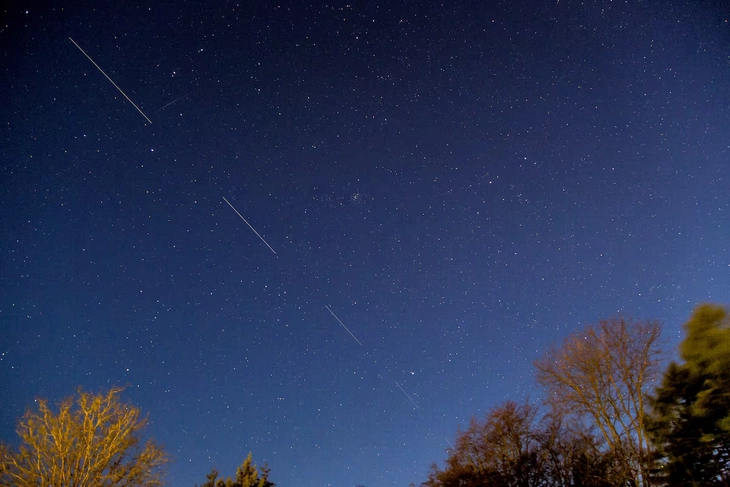
Solar storms are causing severe damage to tech billionaire Elon Musk's Starlink satellites - Photo: REUTERS
According to Gizmodo , this situation could increase the risk of satellite debris falling to the ground.
Solar storm causes satellite to fall early
Preliminary research that has not yet been peer-reviewed adds to evidence that solar storms are causing severe damage to tech billionaire Elon Musk's Starlink satellites.
In recent years, the frequency and intensity of these storms have increased as the Sun approaches solar maximum – the peak phase of its 11-year cycle.
Meanwhile, the number of satellites orbiting Earth has skyrocketed, largely thanks to the development of large-scale private “satellite constellations” like Starlink.
A research team led by Denny Oliveira of NASA's Goddard Space Flight Center tracked the reentry of Starlink satellites from 2020 to 2024. During those five years, 523 Starlink satellites reentered Earth's atmosphere.
Oliveira and colleagues analyzed the orbits of these satellites, to determine changes in orbital decay and re-entry rates during periods of high solar activity.
Researchers found that geomagnetic activity caused the Starlink satellites to re-enter the atmosphere sooner than expected. The satellites are designed to stay in orbit for about five years. But during severe geomagnetic storms, their lifespan can be shortened by 10 to 12 days.
A 10- to 12-day reduction in lifespan may not sound like much, but it could make it nearly impossible for SpaceX to ensure that Starlink satellites return to Earth in a controlled re-entry manner, Oliveira explained.
Furthermore, his analysis shows that increased drag causes satellites to re-enter at higher velocities, which could increase the likelihood of debris hitting the ground.
Understanding the Variations in Solar Activity
Oliveira suggests that faster-falling Starlink satellites are likely to not disintegrate as much, due to less interaction with the atmosphere.
Starlink satellites are designed to burn up completely during reentry, but that doesn’t always happen. In 2024, a 2.5kg piece of Starlink debris fell on a farm in Saskatchewan, Canada, according to New Scientist magazine.
In February this year, SpaceX said debris from Starlink could fall back to Earth, but insisted this “poses no risk to people on the ground, at sea or in the air.”
There are currently more than 7,500 active Starlink satellites in orbit, according to Harvard University astronomer Jonathan McDowell, who tracks the constellation. SpaceX hopes to increase that number fivefold, with a goal of launching a total of 42,000 Starlink satellites, according to Space.com, not counting the thousands of other satellites already orbiting Earth.
Understanding the impact of solar activity fluctuations on the lifetime and re-entry of satellites will be of utmost importance as Earth's orbit becomes increasingly crowded.
Source: https://tuoitre.vn/bao-mat-troi-khien-ve-tinh-cua-elon-musk-roi-rung-som-nguy-co-phat-tan-manh-vo-20250603160924089.htm


































































































Comment (0)